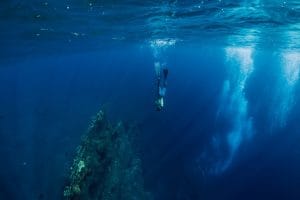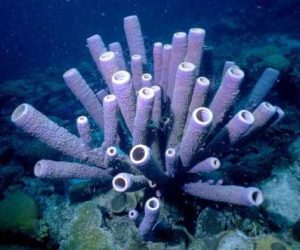
Why Scuba Divers Should Try Freediving: A Personal Perspective from an Scuba diving and Freediving Instructor
Hey everyone, I’m Matt, co-director of OceanSense Freediving here on the Sunny Coast. Over the

 The Mooloolaba Coral reefs and the Ex-HMAS Brisbane are covered in colourful sponges, of all shapes and sizes. Divers commonly mistake sponges as plants, but are in fact simple multi-cellular animals that attach themselves to a surface. They are capable of living in both tropical and polar climates, and can survive down to depths of 8km on the ocean floor. They can grow to a height of 200cm and a diameter of 150cm, with the most common size found on the Sunshine Coast being around 20cm.
The Mooloolaba Coral reefs and the Ex-HMAS Brisbane are covered in colourful sponges, of all shapes and sizes. Divers commonly mistake sponges as plants, but are in fact simple multi-cellular animals that attach themselves to a surface. They are capable of living in both tropical and polar climates, and can survive down to depths of 8km on the ocean floor. They can grow to a height of 200cm and a diameter of 150cm, with the most common size found on the Sunshine Coast being around 20cm.
The scientific term for sponges is Porifera which means “pore-bearing” referring to the tiny holes visible on the sponges. The pores are called ostia and they allow water to flow into the sponge. Sponges don’t have internal organs, muscles, a nervous system, or a circulatory system. Sponges are very effective filter feeders capturing and digesting bacteria, plankton, and other organic particulates floating in the water. In 24 hours, sponges are capable of filtering 20,000 times their own volume of water.
To see sponges in action, have a look at this video by Jonathan Bird’s Blue World. https://www.youtube.com/watch?v=m8a0oNsDEx8

Hey everyone, I’m Matt, co-director of OceanSense Freediving here on the Sunny Coast. Over the
Join us Thursday 30th Jan at 5:30pm to hear David Mullins talk about nudibranch defences
Dear members, I would like to take this opportunity to inform you about a few